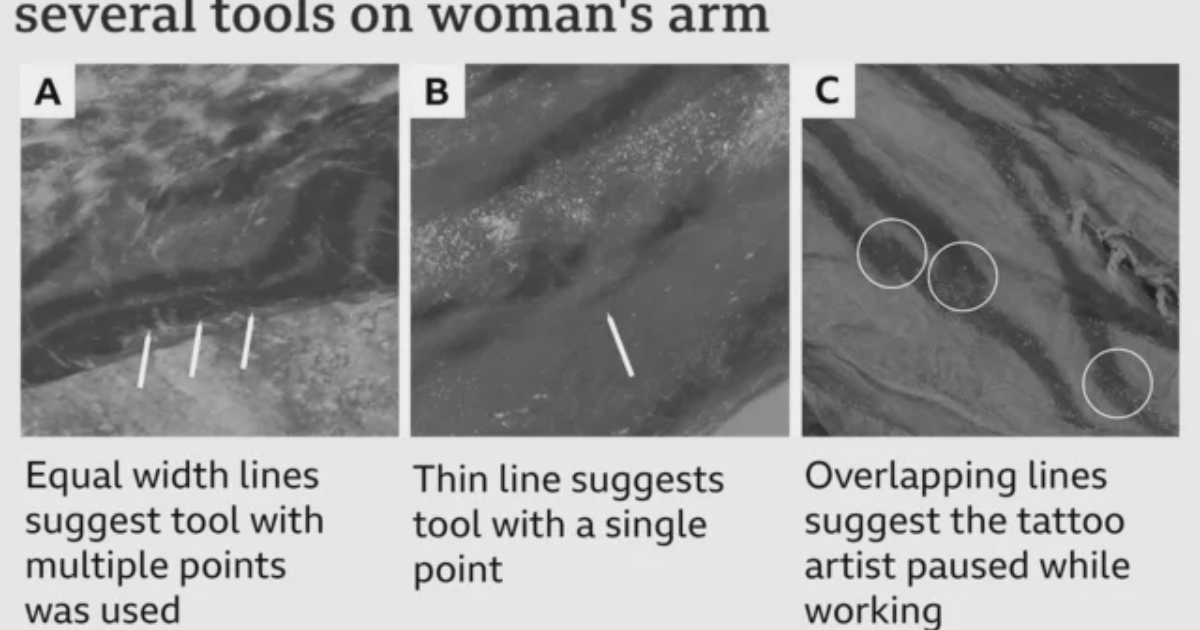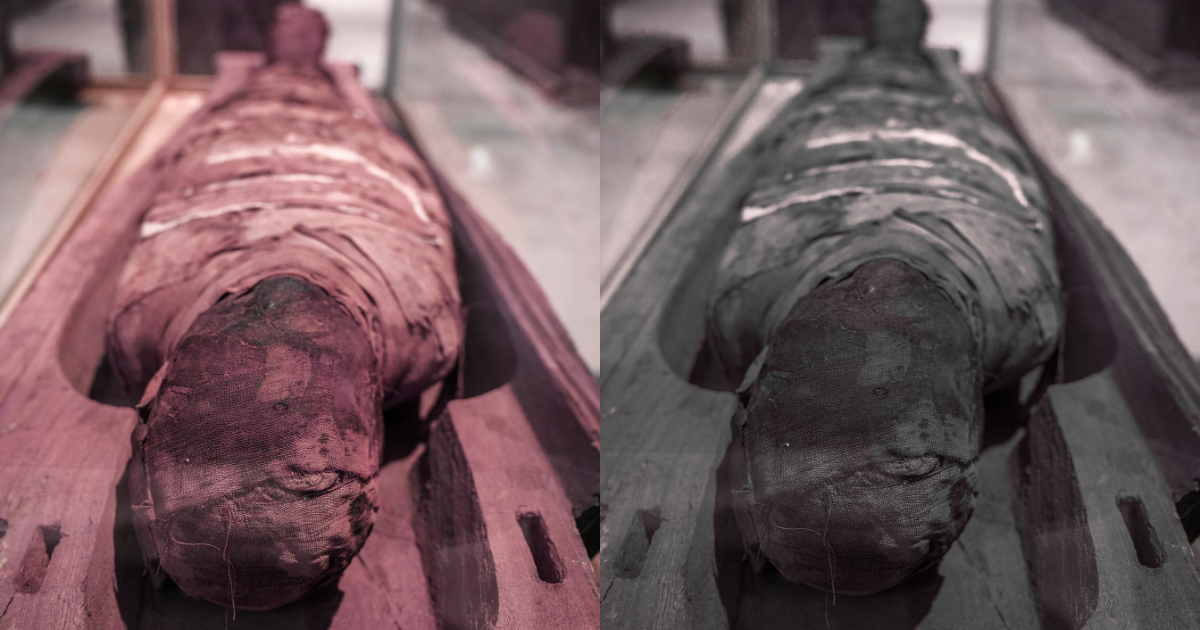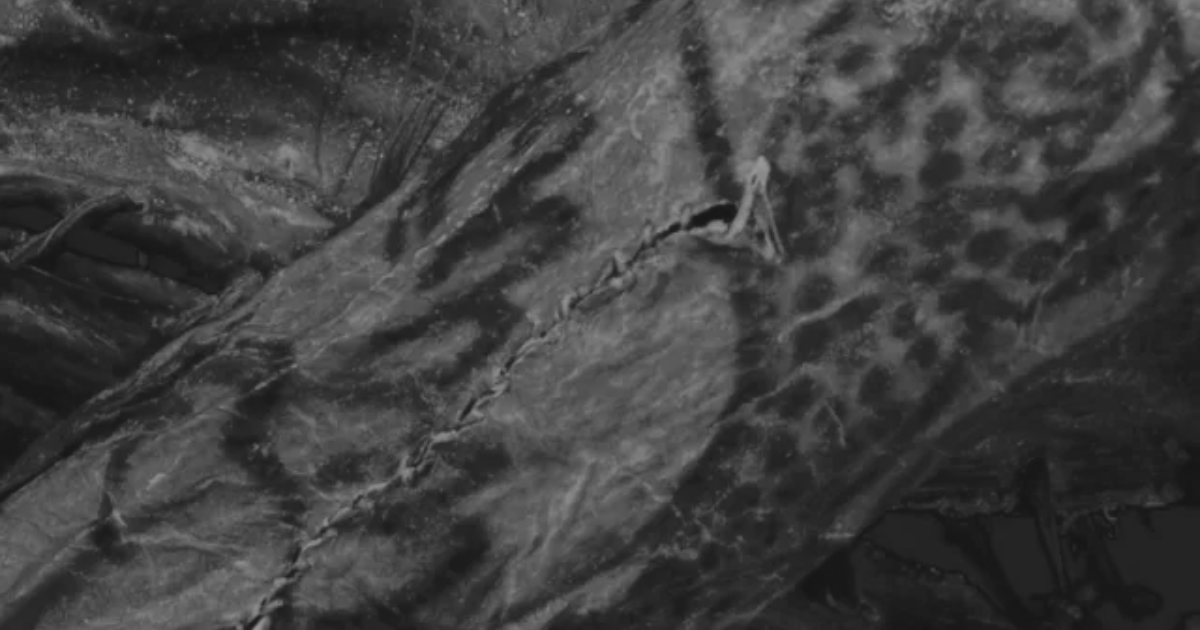High-resolution imaging has unveiled extraordinary tattoos on a 2,500-year-old Siberian “ice mummy”, showcasing artwork so intricate that even modern tattoo artists would find it difficult to replicate, researchers say.
The mummy, a woman believed to be around 50 years old at the time of her death, belonged to the Pazyryk people — a nomadic warrior culture that roamed the steppes between China and Europe. Her body art includes leopards, a stag, a rooster, and a mythical creature with the body of a lion and the wings of an eagle, hinting at a symbolic and possibly spiritual significance in her society.
Experts collaborated with a tattoo artist who specializes in replicating ancient designs on his own skin to better understand the techniques used. The tattoos were found to be crisp, uniform, and incredibly detailed.
#1 often invisible to the naked eye but revealed through near-infrared digital photography.
 “The insights really drive home how sophisticated these people were,” said Dr. Gino Caspari, lead researcher from the Max Planck Institute of Geoanthropology and the University of Bern.
“The insights really drive home how sophisticated these people were,” said Dr. Gino Caspari, lead researcher from the Max Planck Institute of Geoanthropology and the University of Bern.
Her remains were discovered in the Altai Mountains of Siberia, preserved in permafrost inside an ice tomb dating back to the Scythian era. Although these mummies were first found in the 19th century, only now have researchers been able to view the tattoos in full clarity — thanks to cutting-edge imaging conducted at the Hermitage Museum in St. Petersburg.
One particularly striking tattoo on her right forearm shows a group of leopards encircling the head of a deer — a vivid scene that breathes life into the long-lost stories of ancient Eurasian steppes.
“It made me feel like we were much closer to seeing the people behind the art — how they worked, how they learned. The images came alive,” added Dr. Caspari.
This breakthrough not only highlights the artistic mastery of the Pazyryk culture but also offers a rare and intimate window into the life, identity, and beliefs of a single woman who lived over two millennia ago.
#22,500-Year-Old Siberian Ice Mummy Reveals Remarkably Detailed Tattoos Through High-Resolution Imaging
High-resolution imaging has unveiled extraordinary tattoos on a 2,500-year-old Siberian “ice mummy”, showcasing artwork so intricate that even modern tattoo artists would find it difficult to replicate, researchers say.
The mummy, a woman believed to be around 50 years old at the time of her death, belonged to the Pazyryk people — a nomadic warrior culture that roamed the steppes between China and Europe. Her body art includes leopards, a stag, a rooster, and a mythical creature with the body of a lion and the wings of an eagle, hinting at a symbolic and possibly spiritual significance in her society.
Experts collaborated with a tattoo artist who specializes in replicating ancient designs on his own skin to better understand the techniques used. The tattoos were found to be crisp, uniform, and incredibly detailed, often invisible to the naked eye but revealed through near-infrared digital photography.
“The insights really drive home how sophisticated these people were,” said Dr. Gino Caspari, lead researcher from the Max Planck Institute of Geoanthropology and the University of Bern.
Her remains were discovered in the Altai Mountains of Siberia, preserved in permafrost inside an ice tomb dating back to the Scythian era. Although these mummies were first found in the 19th century, only now have researchers been able to view the tattoos in full clarity — thanks to cutting-edge imaging conducted at the Hermitage Museum in St. Petersburg.
One particularly striking tattoo on her right forearm shows a group of leopards encircling the head of a deer — a vivid scene that breathes life into the long-lost stories of ancient Eurasian steppes.
“It made me feel like we were much closer to seeing the people behind the art — how they worked, how they learned. The images came alive,” added Dr. Caspari.
This breakthrough not only highlights the artistic mastery of the Pazyryk culture but also offers a rare and intimate window into the life, identity, and beliefs of a single woman who lived over two millennia ago.لآ
#3Ancient Tattoo Techniques Revealed Through Analysis of 2,500-Year-Old Ice Mummy٤
 Through detailed analysis of markings on the woman’s preserved skin, researchers believe that her tattoos were first stenciled onto the body before being inked—a method that suggests a high level of planning and precision.
Through detailed analysis of markings on the woman’s preserved skin, researchers believe that her tattoos were first stenciled onto the body before being inked—a method that suggests a high level of planning and precision.
The team theorizes that artisans used both single-point and multi-point needle tools, likely crafted from animal horn or bone. The tattoo pigment was probably derived from burnt plant material or soot, common in early tattooing traditions.
Dr. Gino Caspari, lead researcher and tattoo-free himself, emphasized the sophistication of the work:
“This research highlights how tattooing was already a deeply professional and meaningful practice thousands of years ago,” he said. “Artists invested significant time, skill, and intention into crafting these intricate images.”
Interestingly, some of the tattoos appear to have been cut or damaged during burial preparations, suggesting a distinction between the role of tattoos in life versus death.
“This implies that tattoos held strong personal or cultural meaning during a person’s lifetime,” explained Dr. Caspari. “But they likely didn’t carry the same spiritual significance in the afterlife.”
These groundbreaking insights are now published in the academic journal Antiquity.
Reactions
Already reacted for this post.









